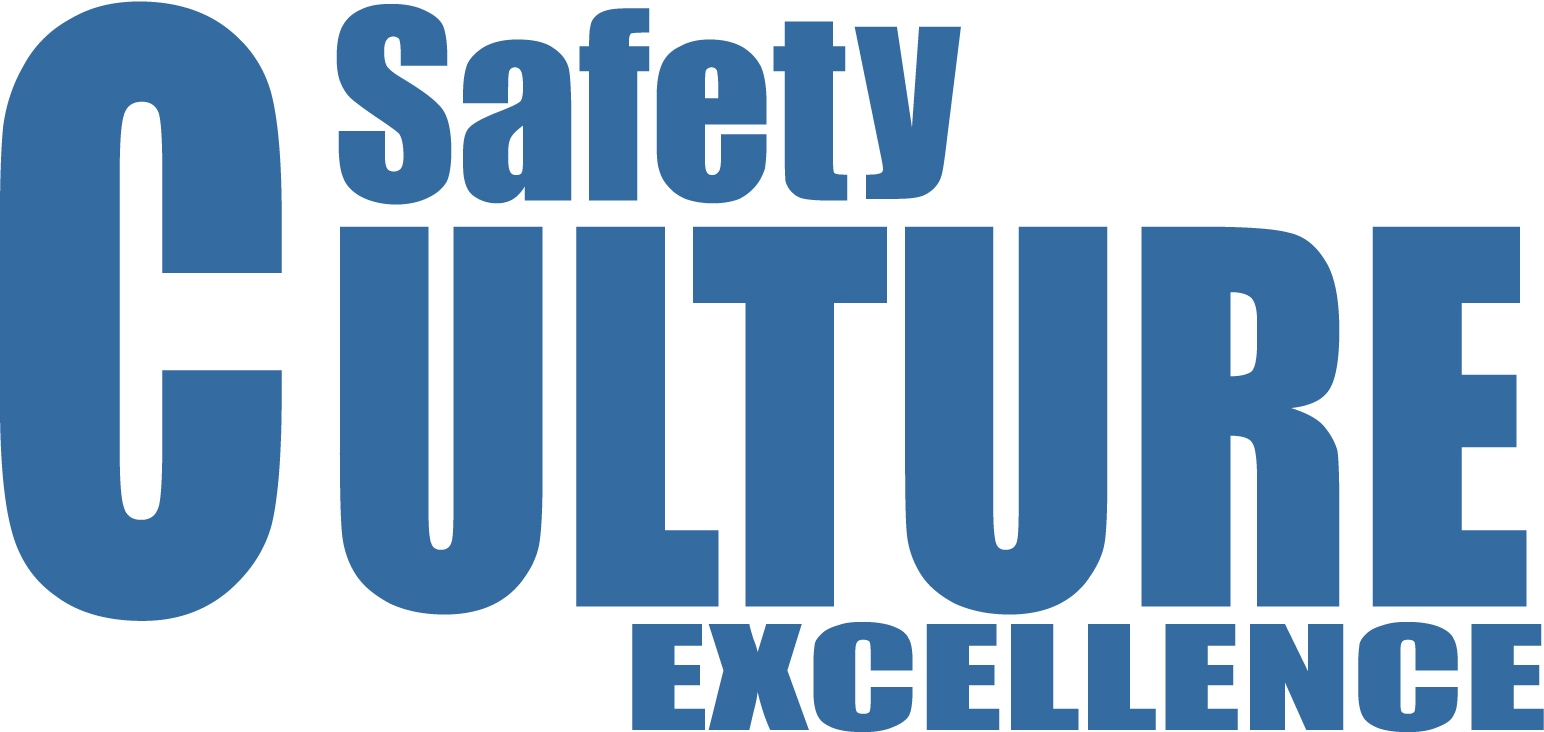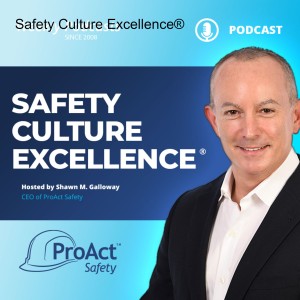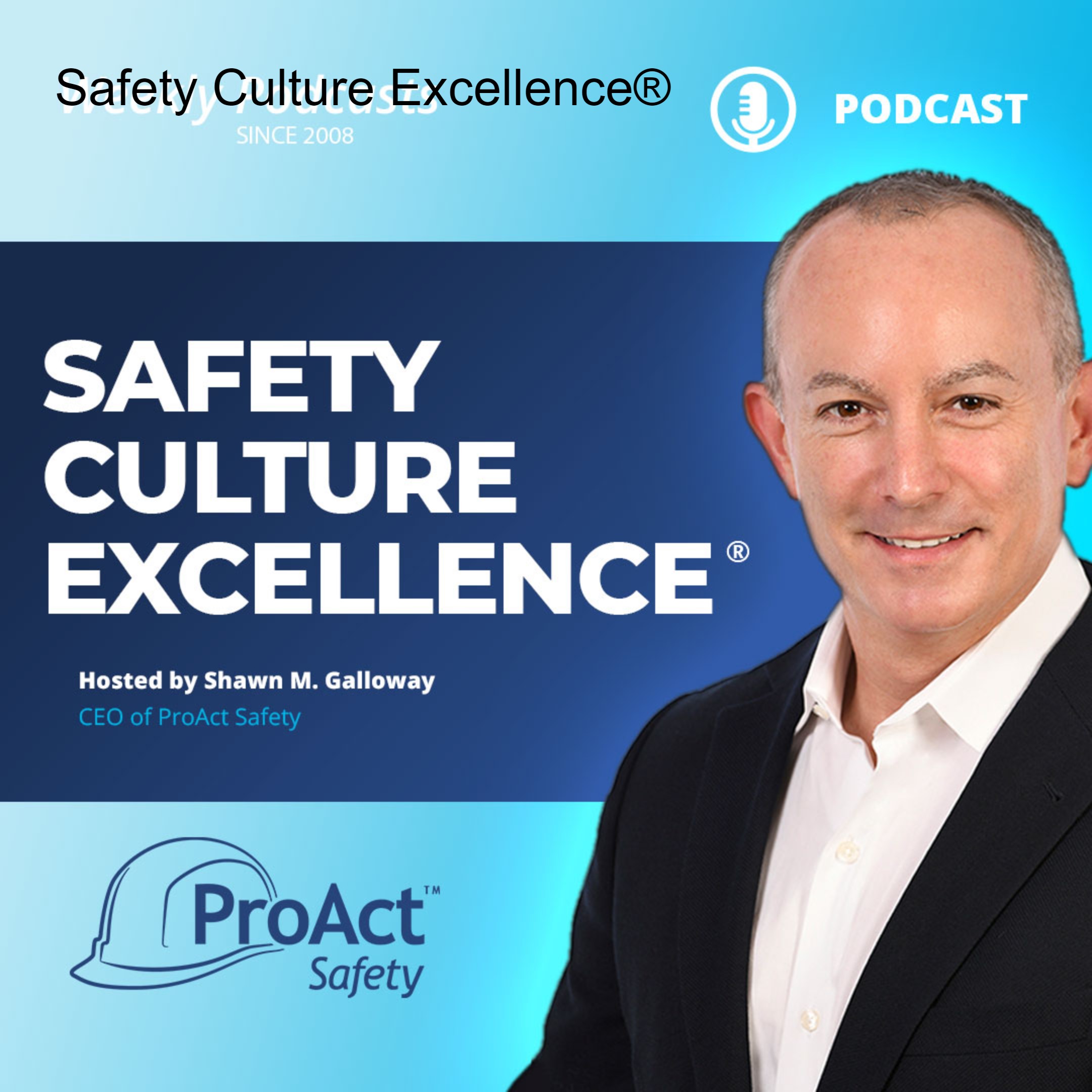Episodes

Wednesday Nov 13, 2013
Focus and Scan
Wednesday Nov 13, 2013
Wednesday Nov 13, 2013
When you drive down the highway your eyes perform two distinct, but related functions. You look at the entire roadway in front of you (scan) and you often glance at the stripes that line your position on the highway (focus). Both of these functions are crucial to safe driving. You need to know the entire path you are traveling, but also need to stay within your land to avoid other vehicles.
Most safety programs have a scan but lack a focus. Workers are admonished to “be careful” and “think before you act” but are not focused on specific improvement targets. Safety improvement is an elephant that must be eaten a bite at a time. Scanning may maintain the status quo, but it will not lead to significant improvement.
The best-performing organizations in safety constantly target specific improvements while maintaining the emphasis on the big picture. Workers are careful but also focused on specific improvement targets that can be transformational for the organization. Safety cultures form around their ability to solve safety problems and move on to other targets. They become a “can do” culture and thrive on conquering specific safety challenges. Excellence is not one-dimensional. It is a combination of scanning for all risks while focusing on overcoming specific risks. The journey to safety excellence is taken a step at a time and these steps are the focus that complement the scanning of the road ahead.
-Terry L. Mathis
Terry L. Mathis is the founder and CEO of ProAct Safety, an international safety and performance excellence firm. He is known for his dynamic presentations in the fields of behavioral and cultural safety, leadership, and operational performance, and is a regular speaker at ASSE, NSC, and numerous company and industry conferences. EHS Today listed Terry as a Safety Guru in ‘The 50 People Who Most Influenced EHS in 2010, 2011 and 2012-2013. He has been a frequent contributor to industry magazines for over 15 years and is the coauthor of STEPS to Safety Culture Excellence, 2013, WILEY.

Monday Nov 04, 2013
314 - Competitive Safety: Breaking the Mold
Monday Nov 04, 2013
Monday Nov 04, 2013
Greetings everyone, this podcast recorded while in Austin, TX. I’d like to share an article written by Terry L. Mathis, published August 2013 in EHS Today Magazine. The published article can either be found on the magazine’s website or under Insights at www.ProActSafety.com.
I hope you enjoy the podcast this week. If you would like to download or play on demand our other podcasts, please visit the ProAct Safety’s podcast website at: http://www.safetycultureexcellence.com. If you would like access to archived podcasts (older than 90 days – dating back to January 2008) please visit www.ProActSafety.com/Store. For more detailed strategies to achieve and sustain excellence in performance and culture, pick up a copy of our book, STEPS to Safety Culture Excellence - http://proactsafety.com/insights/steps-to-safety-culture-excellence
Have a great week!
Shawn M. Galloway
ProAct Safety

Wednesday Oct 30, 2013
Little Things: The Biggest Things in Safety
Wednesday Oct 30, 2013
Wednesday Oct 30, 2013
It is logical to begin a safety effort by addressing the risks with the greatest probability for causing injuries and the highest severity potential. However, it is imperative that when the greater risks are addressed that the next ones in line get the new focus. If an organization ever develops the mindset that they have handled the big things and all that is left are little things, not worth the bother, this is a formula for disaster. Many rude wake-up calls have come via a rash of accidents caused by these “little things.”
Accidents are, after all, ambushes. If we saw them coming we would have avoided them. So it logically follows that anything we don’t keep our eyes on has the potential of ambushing us. Some experts suggest that workers get injured when they fail to recognize the risk. But underestimating the risk is equally dangerous.
Many have adopted a goal or vision of “zero injuries.” If properly explained and implemented, such a goal can keep organizations continuously addressing smaller risks as they successfully eliminate or manage larger ones. When accident rates go down, the effort does not stop; it simply refocuses itself on the next tier of risks. True excellence in safety is quite different from simply pretty good. No risk should ever be considered a “little thing.”
-Terry L. Mathis
Terry L. Mathis is the founder and CEO of ProAct Safety, an international safety and performance excellence firm. He is known for his dynamic presentations in the fields of behavioral and cultural safety, leadership, and operational performance, and is a regular speaker at ASSE, NSC, and numerous company and industry conferences. EHS Today listed Terry as a Safety Guru in ‘The 50 People Who Most Influenced EHS in 2010, 2011 and 2012-2013. He has been a frequent contributor to industry magazines for over 15 years and is the coauthor of STEPS to Safety Culture Excellence, 2013, WILEY.

Monday Oct 28, 2013
313 - Who Should Develop Corporate Safety Strategy?
Monday Oct 28, 2013
Monday Oct 28, 2013
Greetings everyone, this podcast recorded while in Covington, KY. I’d like to share an article I wrote, published August 2013 in OH&S Magazine. The published article can either be found on the magazine’s website or under Insights at www.ProActSafety.com.
I hope you enjoy the podcast this week. If you would like to download or play on demand our other podcasts, please visit the ProAct Safety’s podcast website at: http://www.safetycultureexcellence.com. If you would like access to archived podcasts (older than 90 days – dating back to January 2008) please visit www.ProActSafety.com/Store. For more detailed strategies to achieve and sustain excellence in performance and culture, pick up a copy of our book, STEPS to Safety Culture Excellence - http://proactsafety.com/insights/steps-to-safety-culture-excellence
Have a great week!
Shawn M. Galloway
ProAct Safety

Monday Oct 21, 2013
312 – Who Really Owns Safety?
Monday Oct 21, 2013
Monday Oct 21, 2013
Greetings everyone, this podcast recorded while in Bethesda, MD. I’d like to share an article I wrote, published August 2013 in ISHN Magazine. The published article can either be found on the magazine’s website or under Insights at www.ProActSafety.com.
I hope you enjoy the podcast this week. If you would like to download or play on demand our other podcasts, please visit the ProAct Safety’s podcast website at: http://www.safetycultureexcellence.com. If you would like access to archived podcasts (older than 90 days – dating back to January 2008) please visit www.ProActSafety.com/Store. For more detailed strategies to achieve and sustain excellence in performance and culture, pick up a copy of our book, STEPS to Safety Culture Excellence - http://proactsafety.com/insights/steps-to-safety-culture-excellence
Have a great week!
Shawn M. Galloway
ProAct Safety

Friday Oct 18, 2013
Misunderstanding Hazards and Risks
Friday Oct 18, 2013
Friday Oct 18, 2013
I heard a good analogy recently about the difference between hazards and risks. “Hazards are the sharks you spot in ocean while standing on the shore. They become Risks when you get in the water.” How well do you help those you lead, understand, identify, and respond to the differences?
With good intentions, many organizations prompt activities to purposefully and proactively identify potential hazards in the workplace. While this is admirable, it becomes a complex issue when there isn’t a shared understanding of what a hazard is and isn’t, and how some turn into risk. But, not all risk will turn into incidents and injuries. Further, if there is a shared belief that “safe means zero risk and safety first”, or “safety is our number one priority”; might there be mixed signals sent?
Consider how this might be interpreted, “They say our goal is zero injuries and zero risks and that ‘safety first’ means we are controlling all the risks, yet we have brought several to management’s attention with no action!” This isn’t just hyperbole, this misunderstanding was the result of a conversation with a key union official within a client organization.
Let’s provide some further context on hazards and risk. Wikipedia provides a good definition of hazard. “A hazard is a situation that poses a level of threat to life, health, property, or environment. Most hazards are dormant or potential, with only a theoretical risk of harm; however, once a hazard becomes "active", it can create an emergency situation. A hazardous situation that has come to pass is called an incident. Hazard and possibility interact together to create risk.” Note the key points in this, “most hazards are… only a theoretical risk of harm; however, once a hazard becomes ‘active’…”
A further search in Wikipedia provides another good explanation of risk. “Risk is the potential of loss (an undesirable outcome, however not necessarily so) resulting from a given action, activity and/or inaction. The notion implies that a choice having an influence on the outcome sometimes exists (or existed). Potential losses themselves may also be called "risks". Any human endeavor carries some risk, but some are much riskier than others.” Again, some key points to tease out: “Risk is the potential of loss… resulting from a given action”. Moreover, it points out “Any human endeavor carries some risk…”
Some safety advocates propose there is little point in debating terminology. I strongly disagree. How common language is used influences beliefs and behaviors within the culture. The English language has many different meanings for the same word. Have you ever used a word or phrase that was interpreted incorrectly? Of course you have. You know how important it is to use the correct words when communicating with your family. Why should our dialogue within safety be less important? After all, isn’t it our number one priority? Or wait, is it a core value?
- Shawn M. Galloway
Here is a short video on this topic: http://youtu.be/_BrpiL4rxgk
Shawn M. Galloway is the President of ProAct Safety and the coauthor of two books, his latest published Feb 2013 by Wiley is STEPS to Safety Culture Excellence. As an internationally recognized safety excellence expert, he has helped hundreds of organizations within every major industry to achieve and sustain excellence in performance and culture. He has been listed in this year’s National Safety Council Top 40 Rising Stars, EHS Today Magazine’s 50 People Who Most Influenced EHS and ISHN Magazine’s POWER 101 – Leaders of the EHS World and again in the recent, elite list of Up and Coming Thought Leaders. In addition to the books, Shawn has authored over 300 podcasts, 100 articles and 80 videos on the subject of safety excellence in culture and performance.

Monday Oct 14, 2013
311 - Safety Strategy: Is your safety professional a grunt or guru?
Monday Oct 14, 2013
Monday Oct 14, 2013
Greetings everyone, this podcast recorded while in Nashville, TN. I’d like to share an article I wrote, published August 2013 in BIC Magazine. The published article can either be found on the magazine’s website or under Insights at www.ProActSafety.com.
I hope you enjoy the podcast this week. If you would like to download or play on demand our other podcasts, please visit the ProAct Safety’s podcast website at: http://www.safetycultureexcellence.com. If you would like access to archived podcasts (older than 90 days – dating back to January 2008) please visit www.ProActSafety.com/Store. For more detailed strategies to achieve and sustain excellence in performance and culture, pick up a copy of our book, STEPS to Safety Culture Excellence - http://proactsafety.com/insights/steps-to-safety-culture-excellence
Have a great week!
Shawn M. Galloway
ProAct Safety

Wednesday Oct 09, 2013
Technology and Safety Culture
Wednesday Oct 09, 2013
Wednesday Oct 09, 2013
Trucking companies are beginning to address driver behaviors with new technologies. Several companies make tracking devices that monitor drivers and photographically capture their behaviors and the road conditions in which they are operating. Post trip, these companies can know how many times drivers hit the brakes hard, changed lanes suddenly, exceeded speed limits, and exhibited other behaviors critical to driving safety. Many of these organizations are also monitoring driver cell phone calls and texting while driving.
All this information is supposedly designed to prevent accidents by changing driver behavior. But how these technologies impact organizational safety culture seems to be an afterthought. If used to coach drivers into better driving habits they can potentially create super safety cultures in which drivers strive for more excellent performance. If used as an advanced way to police and punish drivers for offenses previously undetectable, they could seriously destroy safety culture and create a police state in its place.
It is not technology that impacts safety culture, but the way in which organizations implement technology. We have NEVER seen a safety culture punished into excellence. We have seen many cultures coached into excellence. How you use technology is up to you, but consider the culture you will create as well as the behaviors you will identify. A degraded safety culture can quickly erase gains made through policing safety technologically.
-Terry L. Mathis
Terry L. Mathis is the founder and CEO of ProAct Safety, an international safety and performance excellence firm. He is known for his dynamic presentations in the fields of behavioral and cultural safety, leadership, and operational performance, and is a regular speaker at ASSE, NSC, and numerous company and industry conferences. EHS Today listed Terry as a Safety Guru in ‘The 50 People Who Most Influenced EHS in 2010, 2011 and 2012-2013. He has been a frequent contributor to industry magazines for over 15 years and is the coauthor of STEPS to Safety Culture Excellence, 2013, WILEY.

Wednesday Oct 02, 2013
Safety: Well, DUH!
Wednesday Oct 02, 2013
Wednesday Oct 02, 2013
When my kids were young and I said something they thought was obvious, they would say, “Well, duh!” I think this same attitude is prevalent today when we talk about safety strategy. Most organizational leaders and safety professionals seem to think that safety strategy is either extremely obvious or unnecessary. When we ask about an organization’s safety strategy we get a list of either safety objectives or safety activities. Neither of these are strategies.
Most organizations we work with are doing almost identical safety activities. They have a safety mission and/or vision statement, safety training, meetings, stand downs, rules, procedures, posters, JSAs, and safety supervision or oversight. Leaders try to say the right things about safety to demonstrate their commitment and safety professionals try to make a showing in the workplace to dispel the concept that they are paper pushers only.
But few organizations have thought about safety strategically as they would think about a new-product rollout or a merger or acquisition. Safety is not simply activities that limit risks. Safety performance is impacted by the organizational climate, chemistry, culture, management practices and a host of other influences. Strategy is creating a framework that guides decisions about activities and evaluates their contribution to the overall goals. Few organizations have a safety strategy and literally all of them need one.
-Terry L. Mathis
Terry L. Mathis is the founder and CEO of ProAct Safety, an international safety and performance excellence firm. He is known for his dynamic presentations in the fields of behavioral and cultural safety, leadership, and operational performance, and is a regular speaker at ASSE, NSC, and numerous company and industry conferences. EHS Today listed Terry as a Safety Guru in ‘The 50 People Who Most Influenced EHS in 2010, 2011 and 2012-2013. He has been a frequent contributor to industry magazines for over 15 years and is the coauthor of STEPS to Safety Culture Excellence, 2013, WILEY.

Monday Sep 30, 2013
309 – The Ideal Safety Career Path
Monday Sep 30, 2013
Monday Sep 30, 2013
Greetings everyone, this podcast recorded while in Pensacola, FL. I’d like to share an article written by Terry Mathis, published July 2013 in EHS Today Magazine. The published article can either be found on the magazine’s website or under Insights at www.ProActSafety.com.
I hope you enjoy the podcast this week. If you would like to download or play on demand our other podcasts, please visit the ProAct Safety’s podcast website at: http://www.safetycultureexcellence.com. If you would like access to archived podcasts (older than 90 days – dating back to January 2008) please visit www.ProActSafety.com/Store. For more detailed strategies to achieve and sustain excellence in performance and culture, pick up a copy of our book, STEPS to Safety Culture Excellence - http://proactsafety.com/insights/steps-to-safety-culture-excellence
Have a great week!
Shawn M. Galloway
ProAct Safety

